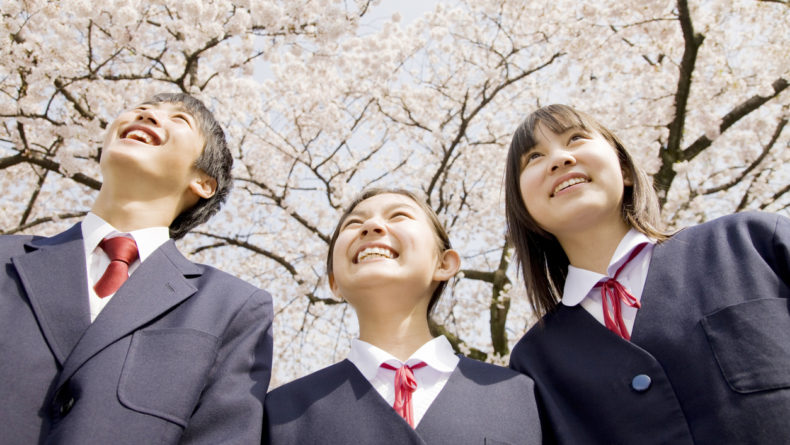Global Education In Japan: Lessons From 5 International Schools
On The Know-Hows Of Raising Future Global Leaders
From problem-solving to community building and respect of differences, these five international schools in Japan offer a unique approach toward education with the goal of preparing children to become compassionate, educated and internationally-minded future leaders.
For years throughout Japan’s history, children have been taught to refrain from “sticking out” because someone will eventually hammer them down if they’re too bold — at least according to the well-known “nail that sticks out” proverb. But now, given the country’s rapidly globalizing, competitive economy and foreign diplomacy — and very much so ahead of the 2020 Tokyo Olympic and Paralympic Games — Japan has been challenged to rethink its education policies and create a feasible system that nurtures future leaders who are truly global: well-versed in foreign languages, knowledgeable of foreign affairs, and well-travelled, to name just a few.
In a rush to meet these challenges, the Japanese government has in recent years been calling for major educational reforms, including the introduction of compulsory English classes in elementary schools’ fifth grade by 2020, a goal of sending at least 120,000 Japanese students to study overseas by 2020, doubling the number of international students in Japan to 300,000 also by 2020, and ensuring a minimum of 10 Japanese universities make it to the top 10 world ranking within the next ten years. The core concept in these initiatives is “internationalism” and high English language proficiency.
But while all of the above are essential factors for raising internationally-minded youth, an overemphasis on English education only is insufficient when it comes to competing globally.
In a bid to gain a different perspective on what education professionals are doing in addition to English education, Savvy Tokyo reached out to five international schools in Japan — Laurus International School of Science, Nishimachi International School, Hayama International School, Kincarn International School and Saint Maur International School — who shared their unique approaches in educating Japanese and foreign children living in Japan.
Technology at practice
While most public schools in Japan are yet to actively incorporate technology in the classroom, all five international schools we spoke to use the latest technologies in all aspects of their education. IPads, laptops, apps, to name the basic few, are used in most classrooms actively under the belief that children must be equipped with technical information from a very early age.
A good example is Laurus International School of Science based in Shirokanedai and four other locations in Tokyo and Kanagawa Prefecture, which is at present, the only international science school in Japan. Laurus specializes in STEM education, a global curriculum based on the idea of educating students in four specific disciplines — science, technology, engineering and mathematics. Equipped with 3D printers, VR and Augmented reality tablets, 3D projections and other high-tech equipment depending on the class requirements, Laurus places science at the forefront of its education as a tool for teaching practical problem solving and critical thinking.

A typical science class at Laurus International School of Science.
“STEM is all about problem solving — and this often means addressing global issues,” says assistant principal Gabriel Jewel. “The problem to be solved could be clean drinking water, land erosion or renewable energy — the answers affect us all. It is our job to prepare children for a future with technology that does not yet exist, jobs that have not been created. We do this by placing the key emphasis on problem solving and inquiry-based learning.”
Saint Maur International School, based in Yokohama, is another good example. With a history of 145 years at the forefront of global education in Japan, the school equips its students with the latest technology based on its core principle that students need to be prepared for continuous technological development as they grow up.
‘It is our job to prepare children for a future with technology that does not yet exist, jobs that have not been created.’ — Laurus International School of Science
Gilles Gaury, the school’s public relations director, explained the logic behind this drive: “We realize that technological proficiency in the 21st century is not limited to the proficient use of just one device, but being able to effectively use a variety of the best resources for the task at hand. Therefore, our infrastructure is an integration of the most powerful hardware and software offered by Microsoft, Apple, Google, Dell, Cisco, Lego, National Instruments, and more.” In 2011, Saint Maur further opened a new Science Center which houses a robotics laboratory and workspace.

The Mac Lab at Saint Maur International School is just one of the school’s many facilities equipped with the latest technology.
In a fast-growing technological world where new devices are released by the minute, the use of technology in the classroom is not only essential to equip children with modern awareness, but also vital for their growth and development as educated members of society.
Social contribution and community involvement
We can all agree that ‘thinking outside the box’ is a concept that children need to develop at a very early age. There are countless factors which contribute to this, but one that stands the most solidly is an involvement with other groups and individuals from whom children can learn through active interactions. This, according to the schools, is at the core of raising children to naturally appreciate differences and grow with a sense of responsibility towards others.
Nishimachi International School, one of the oldest and most prominent schools in Tokyo, hosts regular community events throughout the year, including a Community Service Day, an annual Food Fair and the annual Outreach Scholarship Walkathon and Golf Tournament, which raises money to support the Outreach Scholarship Program to enhance diversity at the school. In addition to this, however, students are also required to take part in programs supporting local and global NGOs and NPOs, including the World Wildlife Fund, Second Harvest Japan, Room to Read and HandsOn Tokyo.

Nishimachi International School students helping to cook and distribute food to the homeless in Ueno Park, Tokyo as part of the school’s community service initiatives.
“Service-based learning opportunities at Nishimachi are one of the main ways our students gain real-world international perspective,” says Kacie Leviton, the school’s marketing and communications manager. “Knowing, caring and taking action: These are the key factors that we want our graduates to take away. They should embrace opportunities to display leadership by taking initiative and bringing out the best in others and themselves, and show confidence and determination to move forward when facing challenges. It is not just about knowing (getting good test scores), it is about ensuring that each student develops into caring, responsible individuals who are able to think critically and creatively in any situation.”
Hayama International School, with campuses in Kanagawa and Tokyo, echoes this. The school provides regular opportunities in support of various organizations and groups in Japan as a means to teach its students the importance of staying involved. A school-wide clean-up community service, a fundraising event in support of Care International, a global NGO; and used clothes donations in support of children in the Philippines, are just a few examples of the school’s regular activities.
Asked what the school thinks the most essential factor for raising competitive and fully international future leaders is, founder Hazuki Tanaka said, “To cultivate the thinking ability to understand differences between self-assertion and self-centeredness firmly and to capture cross-cultures as positive materials.”

Students at Hayama International School are encouraged to learn under the motto “Play, Think, and Learn” in a constantly evolving culturally rich and diverse environment.
Saint Maur International also encourages students to participate in community activities year-round through a special program, which includes a variety of events within Japan ranging from beach cleaning activities, helping orphanage residents, homeless food distribution, rice collection, fundraising following disasters affecting people in Japan and overseas and more.
“Our goal is to create balanced life-long learners, who have empathy for others, and who through their educational experience have gained knowledge, the wisdom to apply it, and those values that enable them to become constructive contributing members of society and the global world in which they live,” Gaury says.
Intensive knowledge of the outside world
If, as the African proverb (and Hillary Clinton in her famous book) says, it takes a village to raise a child, it should take a world to educate one. Our world is simply too limited if we have no exposure and no knowledge of the vast space that is the rest of the world.
‘It is not just about knowing (getting good test scores), it is about ensuring that each student develops into caring, responsible individuals who are able to think critically and creatively in any situation.’ — Nishimachi International School
In line with this thinking, all five schools incorporate intensive learning about other countries and cultures in their curriculums, not only through regular lectures but also through a variety of special educational programs.
Laurus International, for example, collaborates with international schools in England and the Middle East to encourage interaction among students through letter exchange and STEM exchange with specialists at schools in Dubai. Through these assignments, the students are actively encouraged to share information, ask questions and pursue exchange with people outside their regular environment and culture.
Kincarn International School, based in Kawasaki, Kanagawa Prefecture, incorporates regular “global events” into its curriculum, introducing different countries and their cultures. Dubbed “Culture Day,” Kincarn offers regular special events taught by the school’s multinational teachers on their countries and cultures. The school emphasizes global education as one of its core policies toward raising children with a global perspective.

Students at Kincarn International School learn about foreign countries and cultures through lectures and activities on a regular basis.
“We honor different countries and cultures toward building a global perspective of peace and happiness for the development of children,” principal Mari Takahashi says.
This, combined with an English-taught curriculum (and in the case of Nishimachi and Kincarn — Japanese/English, and Saint Maur — English, Japanese and French) at all five schools, prepares children to become ethical, compassionate and internationally-minded young adults well-prepared for a society that is not only constantly evolving, but also where different countries and cultures contribute toward a more prosperous and united world.
And while, in the end, it will be up to each child whether they apply what they had learned at school in their future jobs or lifestyle, the lessons these international schools are sending across appear to be very clear. As Steve Jobs said, children need to “stay hungry” and “stay foolish” — they need to know through practice that there is always so much more out there than they can imagine. Demonstrating and leading them toward this way of thinking is a responsibility of us adults and educators.
Perhaps, this is the best lesson that Japanese public school education can take from their international counterparts.
To read the full interview with each school on their approach toward global education, see here:
- Nishimachi International School
- Laurus International School of Science
- Kincarn International School
- Saint Maur International School
- Hayama International School



















Leave a Reply